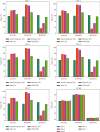Optimal Deep Learning-Based Vocal Fold Disorder Detection and Classification Model on High-Speed Video Endoscopy
- PMID: 36353680
- PMCID: PMC9640237
- DOI: 10.1155/2022/4248938
Optimal Deep Learning-Based Vocal Fold Disorder Detection and Classification Model on High-Speed Video Endoscopy
Abstract
The use of high-speed video-endoscopy (HSV) in the study of phonatory processes linked to speech needs the precise identification of vocal fold boundaries at the time of vibration. The HSV is a unique laryngeal imaging technology that captures intracycle vocal fold vibrations at a higher frame rate without the need for auditory inputs. The HSV is also effective in identifying the vibrational characteristics of the vocal folds with an increased temporal resolution during retained phonation and flowing speech. Clinically significant vocal fold vibratory characteristics in running speech can be retrieved by creating automated algorithms for extracting HSV-based vocal fold vibration data. The best deep learning-based diagnosis and categorization of vocal fold abnormalities is due to the usage of HSV (ODL-VFDDC). The suggested ODL-VFDDC technique starts with temporal segmentation and motion correction to identify vocalized regions from the HSV recording and gathers the position of movable vocal folds across frames. The attributes gathered are fed into the deep belief network (DBN) model. Furthermore, the agricultural fertility algorithm (AFA) is used to optimize the hyperparameter tuning of the DBN model, which improves classification results. In terms of vocal fold disorder classification, the testing results demonstrated that the ODL-VFDDC technique beats the other existing methodologies. The farmland fertility algorithm (FFA) is then used to accurately determine the glottal limits of vibrating vocal folds. The suggested method has successfully tracked the speech fold boundaries across frames with minimum processing cost and high resilience to picture noise. This method gives a way to look at how the vocal folds move during a connected speech that is completely done by itself.
Copyright © 2022 S. Sakthivel and V. Prabhu.
Conflict of interest statement
The authors declare that they have no conflicts of interest.
Figures










References
-
- Slonimsky E. Laryngeal imaging. Operative Techniques in Otolaryngology - Head and Neck Surgery . 2019;30(4):237–242. doi: 10.1016/j.otot.2019.09.003. - DOI
-
- Zacharias S. R. C., Myer C. M., Meinzen-Derr J., Kelchner L., Deliyski D. D., de Alarcón A. Comparison of videostroboscopy and high-speed videoendoscopy in evaluation of supraglottic phonation. Annals of Otology, Rhinology & Laryngology . 2016;125(10):829–837. doi: 10.1177/0003489416656205. - DOI - PubMed
-
- Naghibolhosseini M., Deliyski D. D., Zacharias S. R., de Alarcon A., Orlikoff R. F. A method for analysis of the vocal fold vibrations in connected speech using laryngeal imaging. In: Manfredi C., editor. Proceedings of the 10th International Workshop on Models and Analysis of Vocal Emissions for Biomedical Applications MAVEBA; December 2017; Firenze, Italy. Firenze University Press; pp. 107–110.
-
- Naghibolhosseini M., Deliyski D. D., Zacharias S. R. C., de Alarcon A., Orlikoff R. F. Studying vocal fold non-stationary behavior during connected speech using high-speed videoendoscopy. Journal of the Acoustical Society of America . 2018;144(3):p. 1766. doi: 10.1121/1.5067811. - DOI
MeSH terms
LinkOut - more resources
Full Text Sources

